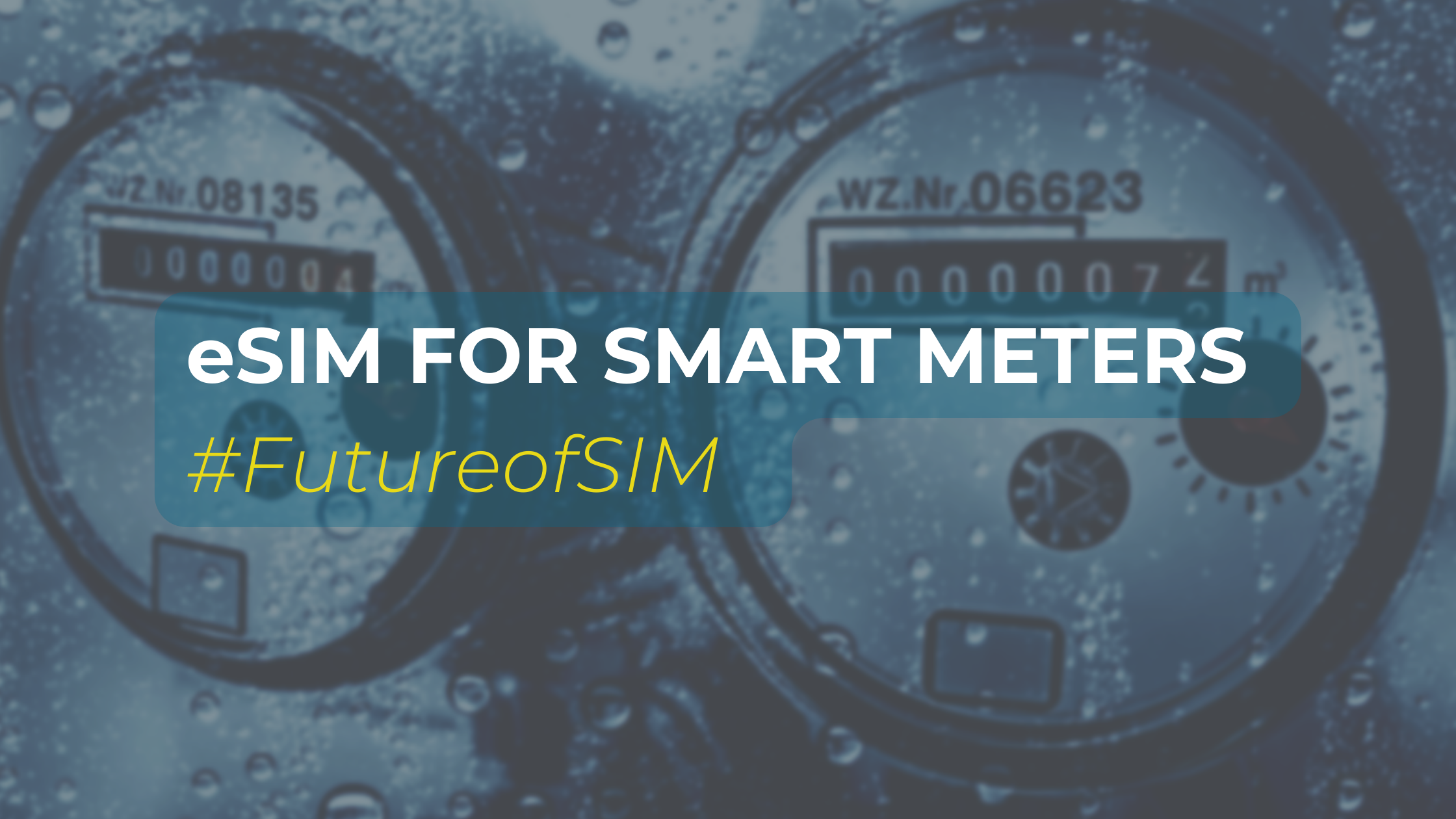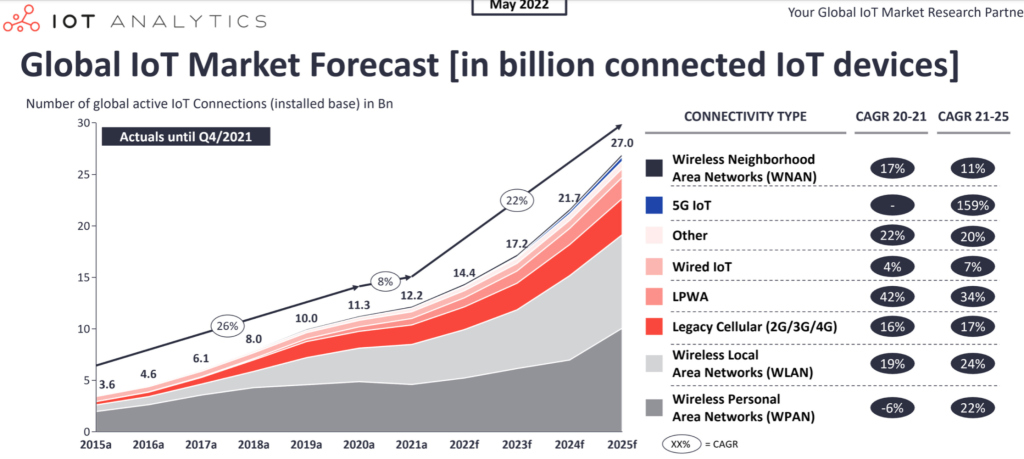
- Resources
- Blog
IoT for Smart Metering and big data
IoT technology is essential to successfully deploying and adopting smart energy meters. IoT devices and networks transfer data over long distances, using minimal power at a low cost. The Advanced Metering Infrastructure (AMI) helps utility companies to automate device connections, customer billing and consumption monitoring. The combination of smart metering, communications networks and data management systems enables two-way communication between utility providers and customers.
Smart metering and smart grid
Using various applications for centralized reading and usage tracking, gas and electricity smart metering locally monitors customers’ energy consumption. Smart meters are often inaccessible and usually have a life cycle of up to 20 years. When connected to the internet, they offer a range of remote monitoring and alerting capabilities. They also enable robust data analytics to help companies and users optimize energy consumption.
Smart meter data feeds into the smart grid, which gives utility companies the ability to aggregate and manage this and monitor the grid’s health remotely and at scale. Smart grid technology uses intelligent meters and analytic tools to automate, monitor and control utilities’ availability across cities. The smart grid allows utilities to deliver sustainability, efficiency and security of supply, enabling them to track and achieve their carbon footprint targets.
LPWA connectivity plays a major role in deployments
Utilities have identified smart metering as an Internet of Things (IoT) application that helps solve the cost, time and efficiency challenges that local meter reading and monitoring present. The transition from traditional to smart electricity meters is one of the most significant IoT initiatives worldwide. By 2030 there will be 2.2 billion electricity smart meters deployed according to the Transforma Insights Connected Things TAM forecast on the Electricity Smart Meter IoT market.
The acceleration of smart meter deployments is mainly because of government initiatives for utility companies to reach sustainability targets by tracking consumption. Recent cellular radio evolution efforts to meet IoT-specific use cases brought about the advent of Low Power Wide Area (LPWA) network technologies, such as NB-IoT and LTE-M.



LPWA networks expanded, especially those using NB-IoT technology NB-IoT adoption took off, with connections growing by 61% YoY, driven by various implementations, most notably in smart metering.
Source: IoT connections market update on IoT Analytics
These radio technologies have attracted utility companies by allowing devices to establish cellular connectivity once or twice daily to report data when they don’t need constant connectivity. They can operate from single-charge batteries for easy installation. The long battery life is precious for gas meters as they don’t usually have easy access to electricity.
Game-changing insights
Smart meter data and analytics help utilities predict when demand will be high to manage supply. They also permit sharing usage patterns depicting billing impact with more efficient customer billing. This, in turn, encourages consumers to plan payments and use electricity and gas more responsibly.
Utility companies see cash-to-meter efficiencies and game-changing customer insights from smart metering usage data. The benefits include quicker demand response, better-distributed resource management, operational efficiencies and improved customer relationships.



A safe and secure technology solution
We’ve established that smart meters and grids require connectivity to achieve data transit to the point of aggregation and analysis. Cellular connectivity, specifically LPWA technology, is ideally placed to provide this due to its standardized nature, ensuring connectivity security, privacy, supportability and reliability.
The SIM card is a critical component of cellular connectivity, specifically for the device’s endpoint security. This protects and assures the network provider’s subscriber identities and authentication within the device. In industrial use cases, device manufacturers, including cellular connectivity, are increasingly choosing permanently fixed SIM form factor, an embedded SIM, or an integrated SIM as part of their design.
Future-proofing with eSIM
Utility infrastructure poses a tempting target for tampering, with smart meters providing an entry point for cyber-attacks. This means sensitive smart meter usage data transmission could be blocked or diverted into the wrong hands. One solution to preventing malicious hacking attacks whilst managing remote deployment at scale is harnessing the security capabilities of the eSIM.
The embedded SIM (eSIM) is a hardware component soldered to the circuit board inside a device. An eSIM is a tamper-resistant chip offering standardized cellular telecom security and functions. This dedicated hardware is physically and logically isolated, offering controlled protection from the rest of the device’s processes and resources.
Irremovable SIMs, whilst infinitely more physically secure, would have prevented a device from being swapped onto a new connectivity provider’s subscription. However, thanks to GSMA’s Remote SIM Provisioning (RSP) architectures and a capable, compliant SIM operating system (OS), the SIM hardware can remain securely in place whilst the carrier’s credentials and settings, the SIM profile, can be remotely added or removed securely.
Cellular connectivity secures the link from a device to the carrier’s internet gateway but not across the open internet to the utility aggregation and management infrastructure. Additionally, it won’t ensure that the meter is genuine and authorized by the utility.
Utilities can agree on using a direct Virtual Private Network (VPN) to the carrier’s gateway; however, this can introduce limitations, so they may additionally look to data encryption to protect data from device to utility. Furthermore, utilities want to verify that only genuine meters gain authorized access to their infrastructure.
IoT SAFE is one option that offers a root of trust within the SIM on the device side. This secures a utility’s cryptography, which can be used to prove the meter’s authenticity to the utility. It can also be used to encrypt all data sent from the device. Encrypted data can then only be decrypted by the utility upon receipt at their secure aggregation point. Conversely, the device can use the root of trust credentials to verify that the data received is genuine and trustable.
With secure, dependable connectivity and an assured device to utility digital communication pathway, smart meters and the smart grid can also benefit from new features and security software updates. This capability ensures they remain suitably protected for their extensive life expectancy and minimizes costly meter maintenance or hardware swap-out visits.
Advantages of eSIM for smart meters
Remote management and scalability
This solution reduces set-up costs and enables seamless global connectivity with the ability to download a local MNO profile on-site.
Seamless connectivity
Available cellular connectivity options include LTE-M, NB-IoT, 2G,3G,4G, and 5G. The wide range of cellular connectivity options has led to utilities leveraging private and public cellular networks for their digital grid infrastructure.
Smart meter security
Devices are made secure by incorporating IoT security into the manufacturing process. This is where the root of trust (ROT) delivers a series of functions in a secure enclave trusted by the smart meter’s operating system. Unique credentials are inserted into millions of smart meter devices, mitigating risk and allowing growth at scale.
Opportunities across the ecosystem
Original Equipment Manufacturers (OEMs)
OEMs can incorporate eSIM functionality at the point of manufacture. They can then offer the utilities a choice of cellular connectivity provision and management options. OEMs can opt to include an in-life connectivity management offering or hand over this task to the Utility or their connectivity management provider. eSIM brings flexibility, allowing a change of connectivity providing network during the life of the meter and permits the inclusion of a fall-back profile to facilitate connectivity recovery should an outage occur on the primary connection.
They can also incorporate a device root of trust capability to enable the Utility provider to securely register every smart meter onto the smart grid’s AMI. This value-add guarantees that these remain secure and that the data is genuine.
Mobile Network Operators (MNO)
MNOs or MVNOs provide ‘connectivity only’ or act as an end-to-end solution enabler. The second option means they can facilitate integration or provide back-end subscription management, data traffic reporting, billing and even remote cloud management capabilities.
Connectivity Management Platform (CMP) Provider
CMPs aggregate connectivity across a host of different cellular networks, removing a utility’s need for complex multiple one-to-one relationships and integrations whilst allowing each smart grid cellular component to benefit from a connection via the most robust local cell. Offering flexible management suited to a smart grid deployment’s connectivity need, the role of a CMP is not necessarily a skill or strength Utilities seek to gain internally, so investing in a provider and service to deliver it for them makes economic sense.
Consumers
Consumers benefit from connected smart meters by getting a greater insight into their energy use. They no longer need to take readings or be available when the utility employee visits. Whether a flat, house or business premises, a smart meter can provide data on hour-by-hour usage. Viewable via mobile app or website dashboard, consumption tracking allows for greater and more granular correlation between user and usage. This in turn, allows them to formulate the most economical routine, be this when to run the washer or tumble dryer or install energy-saving automation.
Governments and Regulators
Governments have committed to challenging zero carbon goals and have issued legislation to meet these. Regulators are charged with delivering on these but within the energy industry, without smart meters and grids, these targets are hard to enforce with the utilities. Mandatory smart meter and grid rollout programs deliver the critical components by which utilities can gather the trustable usage data required to provide regulators. This facilitates regulators to make improved measurements and reporting of the progress toward carbon neutrality.
Additional Smart Metering resources are available below
Smart metering report from Kaleido Intelligence